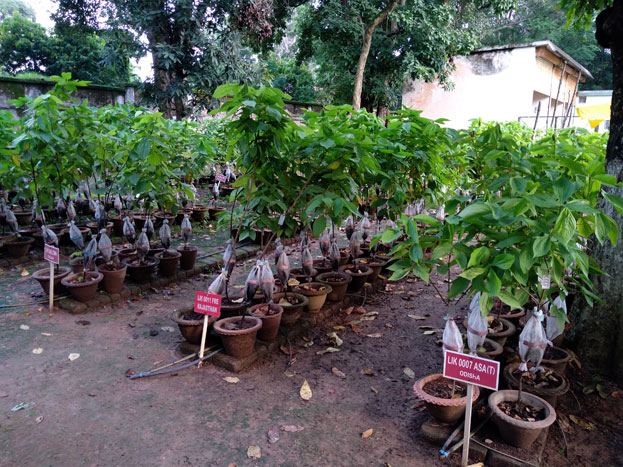All India Network Project on Conservation of Lac Insect Genetic Resources
About project
Lac insect genetic resources in the country exist in the form of a vast array of populations which have evolved and adapted over many centuries, to the range of environmental conditions encountered throughout the country resulting in several breeds, types and strains, each with their own genetic make-up, and each adapted to its own specific niche. Of the nine genera and 101 species of lac-insects reported from all over the world, two genera and 28 species are found in our country, representing 27% of the known lac-insect species diversity.

These insects are exploited for their products of commerce viz., resin, dye and wax. Indian lac insect, Kerria lacca is the most exploited lac insects; K. chinensis and K. sharda are two other important lac producing insects. Lac insects are known to feed & breed on more than 400 plant species. India is privileged in being the largest producer of the lac in the world.
The future improvement and development of lac insect is dependent upon the availability of this genetic variation, which is its principal resource. The lac insect genetic resources available throughout the country are under threat due to the disappearance of a substantial number of local populations, with the consequent loss of their inherent genetic adaptation to their local environments. Particular concern has been growing with respect to the speed at which uncharacterized breeds are disappearing in some regions where climatic, parasitic or disease pressures could have produced important genetically adapted breeds. Unimproved indigenous landrace stocks contain genetic variations, which often include resistance to such parasites. The potential and actual use of these genes for resistance, for incorporation into the production stocks need to be realized.
Conservation issues
Not long ago, cultivation of lac was carried practically throughout the country. Though lac insects are found in the nature all over the country, its cultivation is now restricted only to Jharkhand and Chhattisgarh, and certain pockets of Madhya Pradesh, Maharashtra and West Bengal. As a result, many species of lac insects have either become extinct or are in the ‘waiting list’ of extinction. With abandoning of lac cultivation, unutilized lac hosts are frequently cut for timber and fuel wood etc. Out of more than 400 plants on which lac insects have been observed, only about two dozen are utilized for lac production as commercial lac cultivation on other plants is economically not viable. Moreover, lac-host plants exploited for commercial production of lac vary from region to region. Danger looms large on other host-plants whose economic importance remains to be realized. Future of various flora and fauna associated with lac is thus, intricately linked to the fate of lac cultivation. Fast shrinking area of lac cultivation is a serious threat to the biodiversity of lac insect ecosystem.
In order to coordinate conservation activities pertaining to lac insect genetic resources in different parts of the country, an outreach programme in a Network mode was sanctioned during XIIth Plan with ICAR-NISA (IINRG), Ranchi as lead centre with 10 (7 main co-operating and 03 voluntary centres) other network co-operating centres.
The objectives of the Project are as follows-
- In-situ and ex-situ conservation of the biological diversity of lac-insects of the country
- To develop the Lac Insect Field Gene Bank of the institute as Center of Excellence on Lac Biodiversity
- To transfer the lac cultivation technologies in the in-situ conservation areas
Thrust areas / Priorities
- In-situ and ex-situ conservation of the biodiversity of local lac insect species / races and breeds.
- Identification of different lac insect-host plant combinations for higher and sustained yield.
- Impetus for lac cultivation in areas where in-situ conservation will be done.
- Capacity building in lac cultivation through training of cooperating center resource persons and farmers.
- Document information in the form of bulletin(s) / books / reports on status of lac insect and host-plants in different agroecological regions of the country.
|
Network centres in India Network co-operating centres
Voluntary centres:
|


